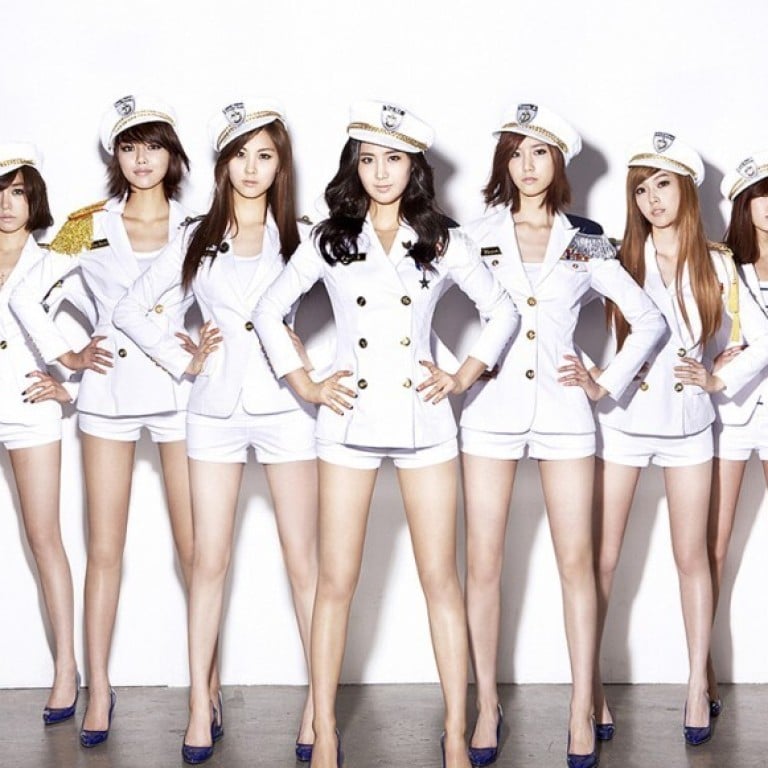Before Blackpink, Twice and Red Velvet – 7 top second generation K-pop girl groups, from Kara to Girls Generation

Second-generation girl groups have done so much for the Hallyu scene: they put all-female ensembles back in the spotlight, challenged gender stereotypes through their daring concepts and enchanted the world with the charm of K-pop.
Here are seven girl groups who first made their mark in the early 2000s that you need to know about.
1. Brown Eyed Girls: sexy bad girls
Debuting in 2006, it wasn’t until 2009 that the Brown Eyed Girls peaked to stardom, following their hit Abracadabra. While the concept behind the song’s music video was met with controversy due to its sensual scenes, the group continued to top charts and win awards. Abracadabra also sparked the “arrogant dance” trend.
Why K-pop girl groups Loona, (G) I-dle and Itzy are making waves
2. Wonder Girls: retro queens
Following their debut in 2007, Wonder Girls became the first South Korean group to penetrate the US Billboard Hot 100 with their song Nobody, which also sparked a dance craze. Having launched English songs, toured Asia and the US and even collaborated with American pop stars, Wonder Girls are credited with paving the way for succeeding K-pop artists to gain entry to the Western market.
3. Girls’ Generation: nation's girl group
At a time when the K-pop scene was dominated by male artists, Girls’ Generation successfully trained the spotlight on new-generation girl groups. They defined the quintessential girl group look: uniforms and heels on stage performances, innocent and cute beauty looks, and an overall feminine style.
The epitome of bubblegum pop, Girls’ Generation made coloured jeans a trend with their bestselling hit, Gee in 2009. The girls have released iconic hits one after another since, experimenting with R&B, electro-dance music and more. To date, Girls’ Generation maintains its influence and remains an iconic K-pop group.
K-pop queens release new music to chase away the coronavirus blues
4. Kara: pretty but natural
Debuting in 2007, Kara only gained commercial recognition after switching to a “pretty but natural” image, which set them apart from senior label mates Fin KL. In 2009, Kara’s breakthrough song Mister solidified their status in the K-pop scene and made the “butt dance” popular. Kara eventually became one of K-pop’s biggest groups in Japan, even winning awards such as No 1 rookie of the year and new artist of the year.
5. 2NE1: queens of K-pop
2NE1 debuted in 2009, with a strong image that broke the cutesy clean-cut look typical of girl groups. Their debut song Fire was an instant hit, solidifying their status as a super rookie group who snagged major awards only six months after debut. Over time 2NE1 proved their artistry through their edgy visuals, out-of-the-box concepts, and their versatile sound, and have become one of the most influential powerhouses of K-pop.
6. 4Minute: girl crush
4Minute debuted successfully in 2009 with a party girl image and became known for their pop-dance tunes and electronic beats. As a “performance group”, the members are praised for their difficult choreography and high-energy stage performances.
Move over, BTS – Blackpink has just become the highest-charting K-pop group
7. Sistar: summer queens
Debuting in 2010, Sistar became known as the “healthy” girl group as they didn't conform to the skinny, svelte image like their contemporaries. Known for their sensual outfits and cheerful tunes, Sistar’s songs were much-awaited every summer. They were considered the power group of the second generation hallyu wave.
Want more stories like this? Sign up here. Follow STYLE on Facebook, Instagram, YouTube and Twitter .

Long before Lady Gaga called up Blackpink, pioneering South Korean girl groups like Wonder Girls, 2NE1, Sistar and 4Minute pushed East Asian pop music into the globe, while challenging gender stereotypes through their daring performance concepts